How to Integrate Scales and Arpeggios on Guitar
A key skill for making your scales and arpeggios sound musical, rather than sound like playing a scale and an arpeggio, is to learn how to integrate scales and arpeggios on guitar.
When I first started learning modes and scales, I had this idea that I had to know everything, in all positions, all over the neck. That’s cool. But when it came to arpeggio integration… well it was just too much for my brain to handle.
You are much better off learning a snippet of a scale and to use an idea you can implement immediately in your improvising and soloing. Having a small idea you can practically use for arpeggio integration is much more powerful than having a theoretical idea you cannot actually play.
Trying to learn everything at once is like learning to juggle with 30 parts. You will not accomplish much apart from making a huge mess.
Break it down into something easy and manageable. Make it easy. Then build and expand on it.
To effectively explain arpeggio integration in a way you can use, we are going to use neck diagrams rather than tabs in this article. There are a couple of reasons for this. First, it doesn’t matter what order or rhythm (although you may want to work on your rhythm and timing for lead playing) you use to play the notes, so a tab isn’t necessary. Secondly, when you have a diagram, transposing shapes into other keys by moving them horizontally on the neck is quite easy to do. You see the shape in your mind and you move it.
Moving something with a tab in your mind is a nightmare.
The red dot in these diagrams is the root note.
First, memorise this 3 string minor arpeggio:
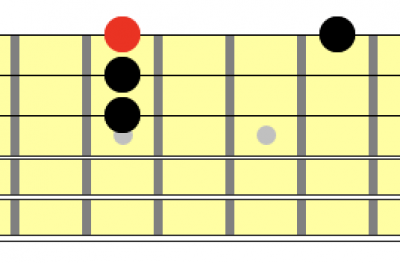
Then, memorise this small section of the natural minor scale:
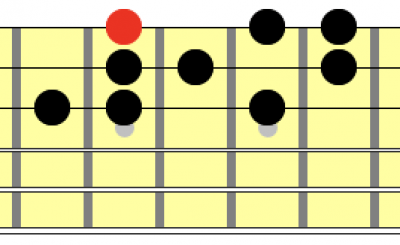
Now if we superimpose them, put the two patterns on top of each other, we get:
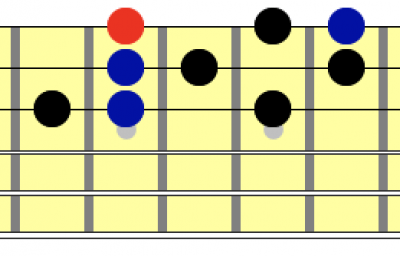
The notes for the arpeggio are already present in the scale (check previous diagram) - but I’ve marked them out for you in blue to make it clear
Play an A minor chord into your computer (or even your phone) and loop the A minor chord. Then improvise over your recording using this idea. While improvising, switch between playing the arpeggio and the scale.
“Can you give me a tab? But what should I do???”
Play with it. Sure it might sound rubbish, but play with it and figure it out.
Once you get the hang of that, here are a few other bite size scale – arpeggio integrations you can try for fun:
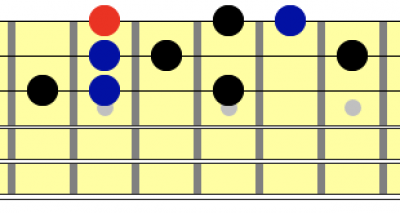
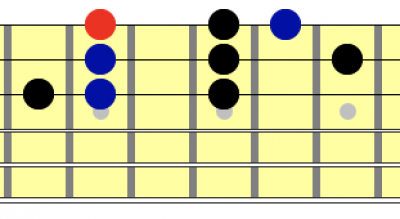
Different Challenges to Try
Challenge 1
Try improvising some licks that follow this pattern:
Arpeggio – natural minor – arpeggio – harmonic minor – arpeggio – melodic minor – arpeggio –
Challenge 2
There are two other minor arpeggio shapes on strings 1-2-3: Can you figure the out and how to integrate your scale patterns around them??
Challenge 3
See if you can integrate your arpeggios with neoclassical style pedal points.
So there you have it - a guide on how to integrate scales and arpeggios on guitar! Enjoy.